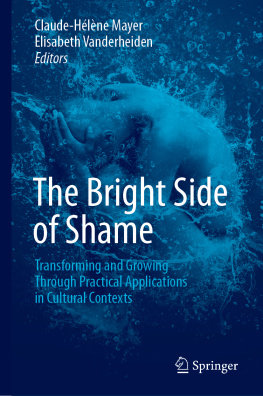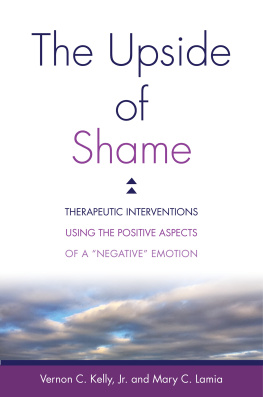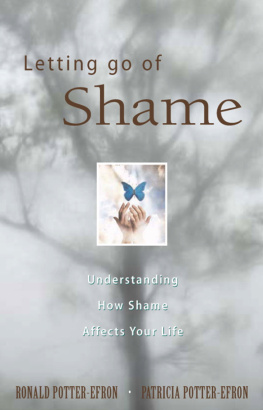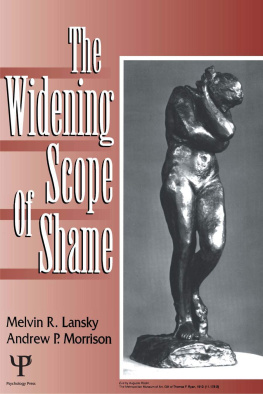Editors
Claude-Hlne Mayer
Institut fr Therapeutische Kommunikation und Sprachgebrauch, Europa Universitt Viadrina, Frankfurt (Oder), Germany
Department of Management, Rhodes University, Grahamstown, South Africa
Elisabeth Vanderheiden
Katholische Erwachsenenbildung Rheinland-Pfalz, Mainz, Rheinland-Pfalz, Germany
ISBN 978-3-030-13408-2 e-ISBN 978-3-030-13409-9
https://doi.org/10.1007/978-3-030-13409-9
Library of Congress Control Number: 2019931533
Springer Nature Switzerland AG 2019
This work is subject to copyright. All rights are reserved by the Publisher, whether the whole or part of the material is concerned, specifically the rights of translation, reprinting, reuse of illustrations, recitation, broadcasting, reproduction on microfilms or in any other physical way, and transmission or information storage and retrieval, electronic adaptation, computer software, or by similar or dissimilar methodology now known or hereafter developed.
The use of general descriptive names, registered names, trademarks, service marks, etc. in this publication does not imply, even in the absence of a specific statement, that such names are exempt from the relevant protective laws and regulations and therefore free for general use.
The publisher, the authors and the editors are safe to assume that the advice and information in this book are believed to be true and accurate at the date of publication. Neither the publisher nor the authors or the editors give a warranty, express or implied, with respect to the material contained herein or for any errors or omissions that may have been made. The publisher remains neutral with regard to jurisdictional claims in published maps and institutional affiliations.
This Springer imprint is published by the registered company Springer Nature Switzerland AG.
The registered company address is: Gewerbestrasse 11, 6330 Cham, Switzerland
Foreword: From Shame to Wholeness: An Existential Positive Psychology Perspective
Keywords Existential shame, Existential competency, Second wave positive psychology, PP2.0, Human dignity, Compassion
Then the eyes of both of them were opened, and they realized they were naked; so they sewed fig leaves together and made coverings for themselves.
(Genesis 3:7, NIV)
According to this biblical story, shame, guilt, and anxiety are the tragic triangle of existential emotions that have plagued humanity ever since Adam and Eve ate the forbidden fruit and became conscious of their sin and the need to cover themselves from God and each other. Human beings gained their independence and became as wise as God at a heavy cost: our ancestors became conscious of their shame and guilt for the first time after breaking the divine covenant and felt anxious when they faced an uncertain future after expulsion from the Garden of Eden.
The metaphorical truth in this ancient narrative is that shame is a deep-rooted existential emotion which stems from the human condition of being conscious of our own nothingness, aloneness, and insignificance in this vast cosmos as helpless orphans.
Shame is indeed a deep-rooted emotion, hiding behind all kinds of negative emotions (Malik, in this book). It encompasses the whole of ourselves; it generates a wish to hide, to disappear, or even to die (Lewis, 1995, p. 2). It is the normal part of the human nature. Shame is also among the most intense and painful affects (Andrieux, in this book). Thus, any effective therapy would benefit from an existential positive psychology perspective (Wong, 2009), which both normalises shame and affirms that the greatest potential for growth only comes from the most intense pain.
An Existential Perspective of Shame
The existential perspective of therapy (Wong, 2017a) has at least three advantages. First, it recognises shame as a universal condition of human existence; therefore, all therapies need to address this fundamental existential issue. Second, it recognises the common humanity and human frailty of all human beings; therefore, this consciousness should contribute to our empathy and compassion for all people, regardless of their race, culture, socio-economic status, or physical condition. Third, it also makes us aware of the existentialspiritual core that exists in all individuals; therefore, it behoves us to tap into this spiritual resource to address mental health issues. In other words, all therapists can benefit from existential competency.
The book makes it very clear that shame permeates our entire existence, from the unconscious to the collective; it is experienced in all situationswhen we feel out of place, inferior in our social standing, inadequate in our performance, deficient in our body image, or humiliated and rejected by others. Even in places where no one is watching, we can still be haunted by fear that someone may find out our dark secret or have witnessed our shameful act.
Shame is the mother of all negative emotions. We may become angry, when we are humiliated or shamed; depressed and even suicidal, when we are ashamed of our own existence; rude and arrogant, when we want to cover up our inferior feelings; lonely and isolated, when we feel too ashamed of ourselves to reach out; addicted, when we are too ashamed to live with our failure and guilt. Ageing and dying pose further challenges; we feel ashamed of the physical changes that come with advanced age, and our sense of shame becomes even more painful when we become totally dependent on others during the last stage of life. In fact, dignity therapy (Martnez et al., 2017) has been increasingly used to reduce this existential crisis in palliative care. In short, in every stage of development, we cannot achieve wholeness without first finding healing for our existential shame regarding our brokenness and nothingness.
Thus, shame is pervasive in various mental health issues. Our shame can turn into social withdrawal, helplessness, depression, addiction (Baharudin, Sumari, & Hamdani, in this book) or aggression and self-harmall inadequate attempts to deal with the problem of shame. Therapists need to have the clinical skill to identify the source of shame and treat it as an existential emotion common to all human beings.
External and Collective Shame
Gilbert (in this book) differentiates between external and internal shame. The former refers to our thoughts about other peoples perception and opinions about us; the latter refers to self-evaluation and self-criticism. Different intervention strategies are needed for these two kinds of shame. While mindfulness and reframing can reduce both types of pain, external shame also requires challenges to a toxic culture, such as discrimination and stigmatisation.
External shame is often associated with social sanction and collective shame, as shown by Mayers chapter (in this book) on the German society. Her chapter reminds us of the importance of a historical understanding of collective shame. For example, the best way to understand Chinese sensitivity to slights from the West as well as the current Chinese nationalism is to remember the 100 years of painful humiliation in the hands of foreign invaders starting from the Opium Wars. At a deeper level, collective shame is related to the tribal mentality and territorial instincts with evolutionary roots in the struggle for survival. In other words, collective shame reflects the existential shame of people who exist as social herd animals.














